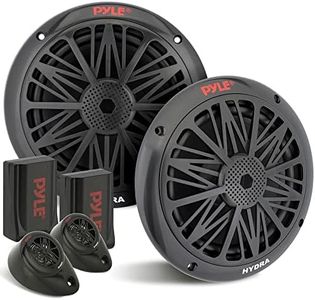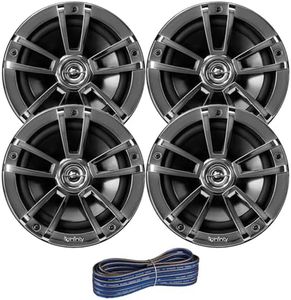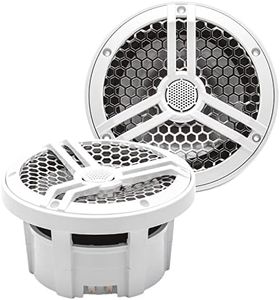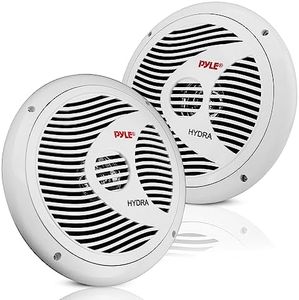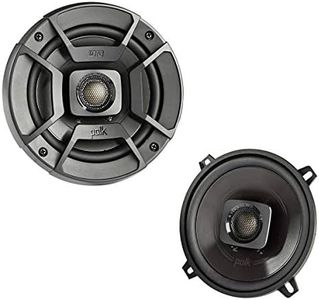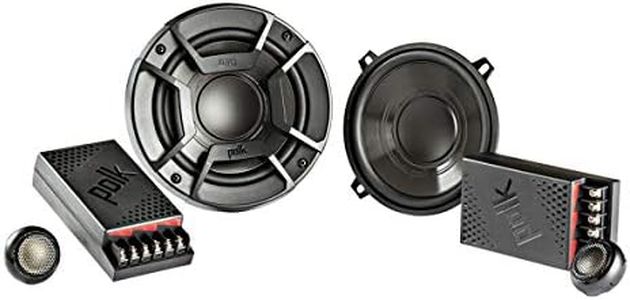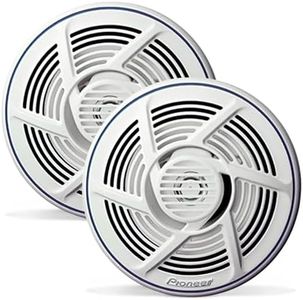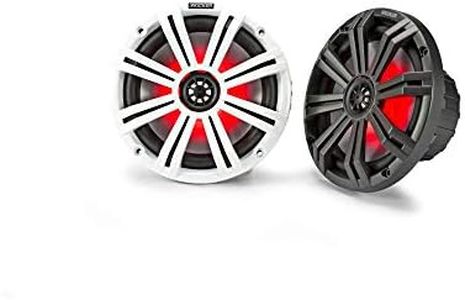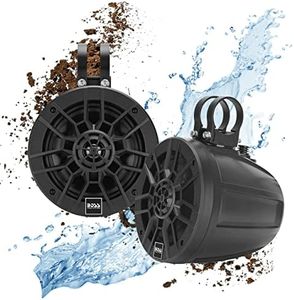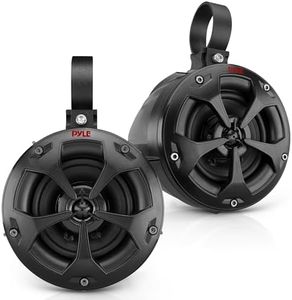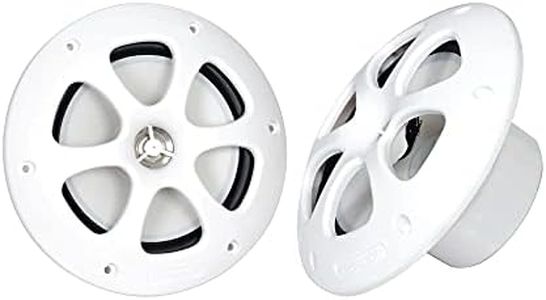We Use CookiesWe use cookies to enhance the security, performance,
functionality and for analytical and promotional activities. By continuing to browse this site you
are agreeing to our privacy policy
10 Best Marine Speakers
From leading brands and best sellers available on the web.By clicking on a link to a third party's website, log data is shared with that third party.
Buying Guide for the Best Marine Speakers
When you're looking to buy marine speakers, it's important to remember that these aren’t just any regular speakers—they’re designed specifically to handle the challenging environment on boats and near water. Good marine speakers bring your music to life even in open or noisy conditions, all while standing up to the elements like sun, saltwater, and moisture. Before making a choice, think about where you’ll mount them, the size you need, and what kind of sound you want. Your needs—whether for soft background music or loud party tunes—should lead your decisions as you work through the important features below.Waterproof RatingThe waterproof rating tells you how well the speaker can handle exposure to water and moisture. This is crucial for marine environments since speakers may be splashed, rained on, or even temporarily submerged. Look for ratings like IPX5, IPX6, or IPX7: IPX5 means protection against water jets, IPX6 stands up to more powerful jets, and IPX7 can handle being submerged briefly. The higher the rating, the better the protection, so choose a higher rating if your speakers will be in places with lots of water exposure.
UV ResistanceUV resistance refers to how well the speaker materials stand up to sunlight and heat without fading, cracking, or warping. Since marine speakers are often exposed to the sun for long periods, you'll want ones specifically built to resist UV damage. Manufacturers may note UV-resistant plastics or coatings. If your speakers will be out in direct sunlight a lot, make sure they’re rated for UV resistance so they’ll last longer and stay looking good.
Power Handling (Watts RMS/Peak)Power handling describes how much power the speaker can manage, listed as RMS (continuous power) and Peak (maximum short burst). Higher power handling can mean louder, clearer sound, especially in open spaces or above engine noise. For quieter listening, moderate power handling is fine, but if you want to crank up the music or hear it over wind and waves, choose speakers with higher RMS values. Make sure the speaker’s power matches your marine stereo or amplifier for best results.
Speaker SizeSpeaker size, measured in inches, influences how much sound the speaker can produce and how much space it will need. Common marine speaker sizes are 6.5”, 8”, or even larger. Bigger speakers often provide deeper bass and fuller sound, but make sure they'll fit in your mounting location. Check your boat's available space and cutout dimensions, and think about how much room you have versus the type of sound experience you want.
Material ConstructionConstruction materials—like polypropylene cones, rubber surrounds, and marine-grade metals—determine the speaker’s durability against water, salt, and vibration. Some materials handle these stresses better than others. Always look for speakers labeled as 'marine-grade,' and check that all visible components, like grills and hardware, are anti-corrosive. Pick higher quality materials if you're boating in salty or humid climates to avoid early deterioration.
Mounting StyleMounting style determines how and where you can install the speakers. There are flush-mount (inset into surfaces), box, and tower (wakeboard tower) options. Flush-mounts are neat and work for inside cabins or dashboards, boxes can go under seats or in open-well spaces, and towers are best for projecting sound across open decks. Choose a mounting style that suits your boat’s layout and your listening preference.
SensitivitySensitivity is a measure of how much sound the speaker produces from a given amount of power, measured in decibels (dB). Higher sensitivity means the speaker will play louder with less power—a good fit for boats where you may not have a very powerful stereo. If your audio system has a lower output, pick speakers with higher sensitivity to get better volume and clarity without straining your system.

